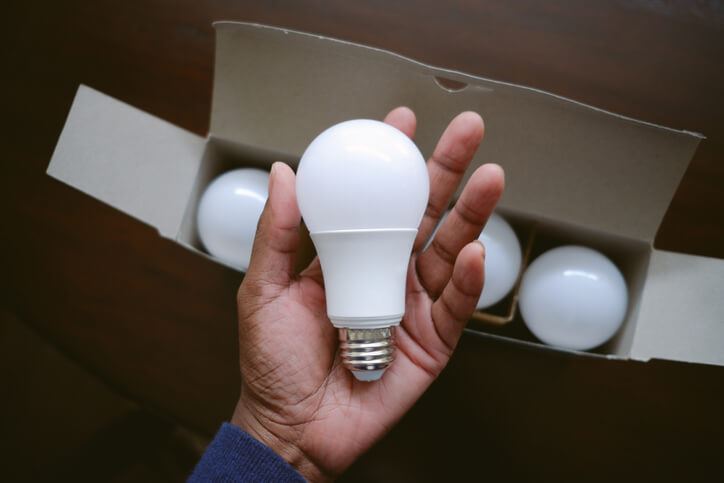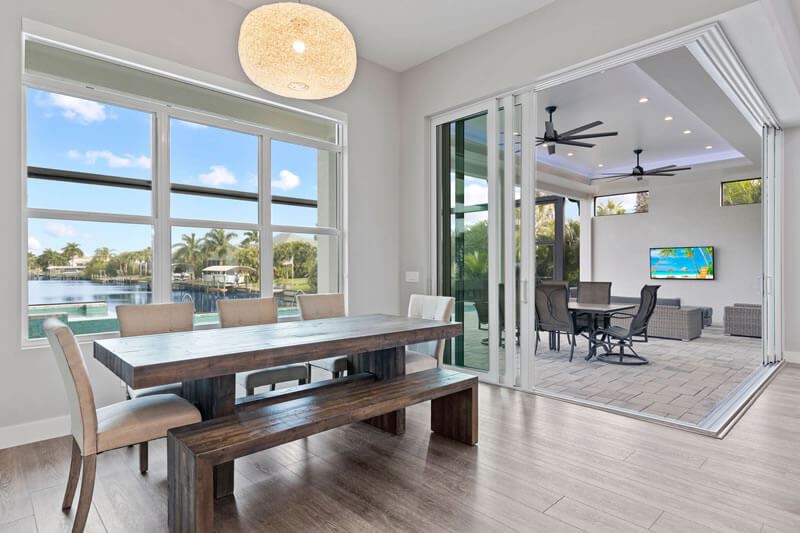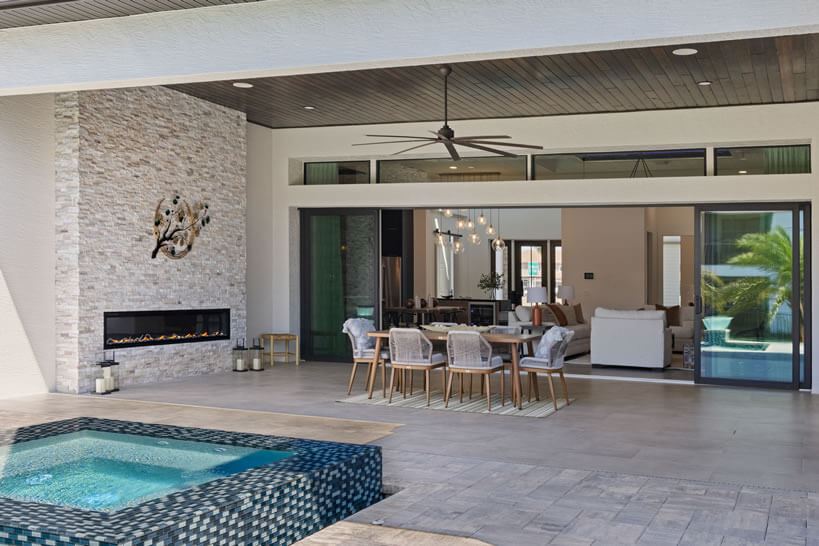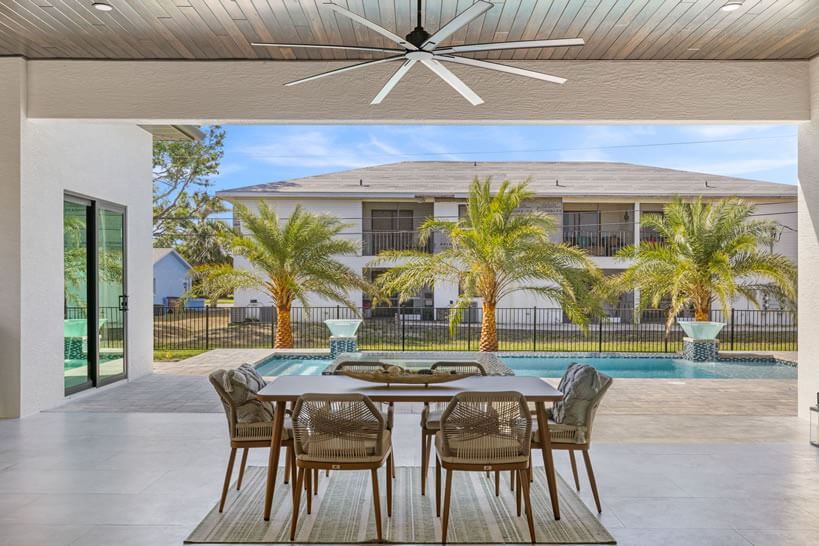Florida is hot and humid from May to November, which makes keeping your home cool more than just a summertime endeavor. There are a variety of reasons your home may feel uncomfortably hot during Florida’s peak temperatures. Whatever the reason is, it’s important to prepare your house for the comfort of you and your family. Here are some reasons your house may be getting too hot during warm months and what you can do to address these issues.
Beat the SWFL Heat and Humidity with These Home Improvement Recommendations
How to Prepare Your Home for the Hot and Humid Weather
Don’t let hot weather sneak up on you. Start planning for the warmer weather months ahead of time. If you inspect your home, you may learn there’s a problem that requires extra time and money.
You’ll thank yourself later if you take care of these issues before the weather gets too hot. Here are some things to consider when preparing your home for hot weather.
Invest in cooler lighting and appliances
Electrical appliances and light bulbs can impact the temperature within your home. Before outdoor temperatures heat up, invest in appliances and lighting that will help to keep your home cooler. For example, replace any incandescent light bulbs with energy-efficient options like LEDs or CFLs.

Incandescent light bulbs give off a lot of energy. In turn, that heats up your home. While LEDs do create some heat, the majority of their energy creates light. LED light bulbs do not require heat to stay on. According to Marissa of Sitler’s LED Supplies, they are “manufactured with heat sinks that pull heat away from the diodes”.
LEDs produce 80% less heat than incandescent bulbs, keeping your house cooler. As an added bonus, those bulbs will significantly bring down your energy bills.
Switching your larger appliances to energy-efficient models will bring down the ambient heat in your home too. In addition, making choices about how you cook in the hot weather can have an impact on your home’s internal temperature.
Making different choices in the kitchen during hot months can also have a positive impact on your home’s internal temperature. For example, air fryers emit less heat into your home than ovens because they are smaller and do not need to pre-heat. You can use an air fryer for many of the same foods for which you might use an oven. Consider other options for warm weather cooking, such as outdoor grilling, counter-top instapots, and crock pots.
When drying your clothes, consider using a low temperature heat setting for a longer cycle in order to emit less heat into your home. This may not save you money, because the dryer will have to run longer, but it will keep your dryer from battling your air conditioning unit.
Apply treatments to the interior and exterior of your windows
Apply window film to the interior of each window and to the exterior of the windows you can reach. These treatments block against solar heat gain. They also protect against glare and ultraviolet exposure. They have three layers that insulate your home by reflecting heat. One that sits on the glass, a polyester film layer, and a scratch-resistant coating.
You can also add UV blockers or low-e films as an added level of protection and energy savings. Window treatments are also a great option for those who want less sunlight but don’t want to completely block out the views from their windows and want to be able to control the flow of light at various times of day.
Replace windows
If treating windows isn’t enough to make a difference, you may want to consider replacing them. If your house is cold during the winter and warm during the warmer months, air may be leaking through your windows. You may be able to solve the issue by resealing your windows. But if they are old enough, you might be better off replacing them altogether.

According to the Department of Energy, “sealing, repairing, or waterproofing your windows are some of the most effective ways to reduce heat gain during the summer months.” Make sure to select high-quality materials for your new windows. Double-pane, high-performing glass will reduce heat transfer and ensure your home is moderate and easily maintained.
Better insulate your home
Insulation is not just about keeping your house warm — it’s an important part of keeping your house cool when temperatures are high. If you live in a smaller home, you can use spray foam, rigid foam boards and batt insulation. Make sure you’re insulating ducts to prevent any leaks.
You need to be more particular with insulation materials for a larger home. Your insulation materials need to “contain a high thermal mass” to store heat. This includes brick, cement, stone, and ceramic tiles.
Coat and seal your roof
A liquid-sealed roof will reflect sunlight and keep your home cooler. If you want to take it one step further, you can update your house with a cool roof. Instead of using sealants, these roofs are built with materials that actively reflect more sunlight. When your roof is cooler, your entire home is too. Green building initiatives are in demand, meaning a cool roof can help boost your property value if you sell.
Natural ventilation
Take advantage of your home’s built-in ventilation to keep your house cool. As Nerd Wallet says, “This is done by letting cool air enter at the lower level of your home or on its north side, while letting hot air escape through an open window on the upper level.” Practice this at night when it’s cooler outside. You can also naturally ventilate the inside of your house. Keep doors and windows open on the opposite of a space to encourage air flow across your home. You’ll feel a difference in no time.

Invest in heat pumps and/or water-cooled fans
Heat pumps offer a great alternative to furnaces and air conditioners. They operate in a similar fashion to a refrigerator because they use electricity to transfer heat from a cool space to a warm space. This makes the cool space cooler and the warm space warmer. Since they transfer heat instead of generating it, they’re a great tool for consistently keeping your house temperate.
Landscape with intention
Looking to update your landscaping this spring? Before you start planting, start thinking about where the sun hits your house. Plant trees or grow shade vines in hot areas to provide your home with shade. This will both keep your house cool and will enhance its curb appeal.
Embrace passive cooling techniques
Passive cooling focuses on preventing excessive heat in your home. It enhances heat transfer through natural methods such as wind, water, and vegetation. Achieve this with options like insulation, energy-efficient windows, and cooling house construction materials.
Passive cooling helps naturally save on energy costs while improving your indoor air quality. These efforts can reduce the need for air conditioning by up to 50 percent. That will put less pressure on local electricity grids and help reduce the risk of power outages.
How to Keep Your Home Cool During Hot Weather
Preparing ahead of warm weather is a great way to ensure your family will be comfortable when temperatures are at their hottest. Some preparations are quick and easy. Others will take time and planning. Some may even reveal home improvement issues to solve sooner rather than later.
But not all of your preparations need to be time and money-intensive. Here are some quick changes to make to keep your house temperate and family happy, even when the temperatures outside are at their highest.
Adjust your ceiling fans
Adjusting your ceiling fans is a quick and inexpensive way to adjust temperatures. Right before the hot months roll around, take a look at the direction your fan is blowing in. If you want to remove hot air, make sure the blades are moving counterclockwise.

This will push cool air down and automatically make the space cooler. Make sure to keep your fan clean as well. If dust and other grime builds up on the blades, the fan will end up using more energy to cool your home. Also, if a fan isn’t operating at peak performance, it will not be as effective at keeping your home cool.
And, of course, you can always install ceiling fans in those areas of your home that need more air circulation. This is especially true for rooms at the top or bottom of stairs—such as attics and crawl spaces—or rooms that get more sunlight during the day. Temperatures can fluctuate wildly from room to room in certain floorplans for these reasons. Installing fans can not only make a big difference in the ambient temperature, but it can add home-value and increase your enjoyment of those living spaces.
Make the outdoors more livable
Your local electrician can help you make the outdoors more livable and enjoyable during the hot weather months, especially in the early mornings and evenings when temperatures are lowest. Here are the top ways an electrician can help:
- Add exterior lighting – By having your local electrician install attractive exterior lighting, you’ll be more inclined to use your outdoor spaces when the sun has gone down. Keep the lighting soft and subtle, to create a cozy ambiance.
- Add exterior outlets – You can never have too many outlets, even on your patio or porch! Use your new outlets for a speaker or sound system, a cooling fan, or a plug-in string of lights.
- Change to dimmer switches – Exterior lighting benefits from having dimmer switches, so that you can adjust lighting to suit the time of day.
- Add a ceiling fan – A large ceiling fan at the top of your porch, patio or pergola will keep air moving, like a soft breeze. Moving air feels much cooler on the skin, even during hot and humid weather.
- Install a hot tub – This may sound counter-intuitive, but a dip in a hot tub, even on a hot day, can be refreshing as soon as you climb out and the water cools on your skin. An electrician can install all the necessary wiring safely and to code.
Check your plumbing
Plumbing may not be the first thing you think of, when it comes to keeping your home cool during heat waves, but a licensed plumber can, in fact, take several steps that will contribute to the overall coolness of your home:
- Wrap your pipes – If your pipes are not wrapped and insulated, this is a great place to start. Your hot water pipes, if not insulated, will release heat wherever they travel through your home, so insulation is a must to keep this from happening.
- Check your air conditioning drains – AC drains are often overlooked, but a blocked AC drain can cause your AC to stop working when you need it most. Clogged AC drains can also foster the growth of mold, so get these drains checked before the start of hot weather.
- Insulate your hot water heater – If your hot water heater has insufficient insulation, it can contribute to warming the interior of your home. A licensed plumber can check this for you and take corrective action.
Keep an eye on indoor humidity
High humidity can feel worse than low humidity when it’s hot out, so it’s important to constantly keep an eye on those levels during warm weather. There are a few different ways you can easily monitor levels:
- Purchase a hygrometer — That number gives you a reading on the indoor humidity in your home, compared to the temperature. If you get a reading above 30 – 40 percent, your house is too humid.
- Perform an ice cube test — Fill a glass with water and a few ice cubes. Let it sit for about five minutes. If condensation forms on the outside of the glass, the humidity in your house is too high.
Be mindful with your shades
During hot weather, shades are your best friend. If your living space gets a lot of direct light, keep your shades closed on especially sunny days. Blocking that direct sunlight will immediately cool your space down.

You should also be mindful about which type of shades you have in your home. For example, shades with reflective lining or quilting will reflect heat off of your house. This is similar to how a roof can reflect heat. But you can also go with blackout shades if you’d like to block out as much light as possible from the interior of your home.
Pay attention to your thermostat
Your thermostat plays a major part in keeping your home cool. If your current model is older, consider upgrading to a smart thermostat. Newer models can learn your habits and adjust temperatures based on when you’re home. That will help reduce energy usage and ensure that your home is coolest when you need it the most.
Improve indoor air quality
Keep air circulation fresh in your home by running bathroom vent fans during your shower and for 15-20 minutes after using the shower. You should also get in the habit of using the fans in your kitchen range hood when cooking. This helps clear out odors and, if you have a gas stove, helps clear out this source of indoor air pollution.
Using filters in your air purifiers or HVAC systems is a great way to keep the air in your home as clean as possible. Just make sure to regularly change the filters. Aim to do this every 90 days or so. If they become too saturated, those systems will not be able to operate at peak performance levels.
Paint walls lighter colors
Believe it or not, the color of your interior and exterior walls can have an impact on indoor temperatures. It’s the same concept of people dressing in lighter colors to stay cool when the sun is blazing. Lighter colors reflect heat better, which will help bring down temperatures. A fresh coat of paint is also great practice for general home maintenance.

TL;DR — There are plenty of home improvements and smart choices you can make to ease even Florida’s summer heat.
Don’t just rely on your air conditioner to keep your house cool. Take the time to do necessary repairs and updates around your house that will contribute to cooler temperatures. Plan ahead to give yourself time to finish any larger home improvement projects, such as adding insulation, that might be needed to cool your home.
But don’t forget to do little things around the house to bring down temperatures. From pulling your shades to changing the direction of your ceiling fan, these small things will add up and make a difference.
If you need assistance with any of these home improvement projects, don’t hesitate to reach out to Bergau Home & Commercial Services, we’re here to help. today to schedule a conversation. We’re ready to help keep your home in tip-top condition. For larger home improvement projects like replacing your windows, please get in touch with the remodeling division of our sister company, Bergau Development.
Photo Credit Note: home exterior & interior photos belong to Bergau Development.

